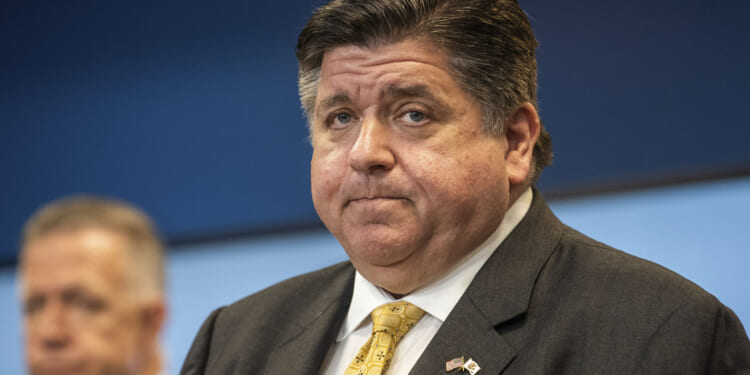Illinois taxpayers in 2024 owed an average of $38,800 each, ranking No. 3 in the U.S. Illinois earned an “F” for fiscal management.
Illinois amassed the third-highest debt for each of its taxpayers at $38,800, earning an “F” grade for fiscal management, according to experts from Truth in Accounting.
But it could be worse by now. The report compared other states’ data for 2024, but was forced to use Illinois’ 2023 data because Illinois has yet to account for its spending a year and three months after fiscal year 2024 ended.
The 2024 State of the States report found Illinois had $51.5 billion to cover $224.3 billion worth of bills. The outcome was a $172.8 billion budget shortfall, which would cost each taxpayer $38,800 to pay down.
The accountants found of the $224.3 billion in bills Illinois needed to pay down, over $148.6 billion of the cost stemmed from unfunded pension benefits for government employees. The next largest line item was bonds.
Illinois ranks among the 16 U.S. states deemed “excessively tardy” for not publishing their annual financial reports within 250 days of the end of fiscal year 2024.
Illinois’ financial report for fiscal year 2023 took 774 days to publish, setting a national record for tardiness. There is currently no estimate on when the 2024 report will be published.
While Illinoisans already face one of the highest taxpayer debt loads in the nation, the watchdog group notes things could get even worse. The report concluded Illinois is likely to lose billions in additional federal funds the state has relied on since 2020 to help pay down costs.
Based on the available limited data, the experts determined Illinois could lose $16.1 billion, bringing federal support back in line with 2019 levels, adjusted for inflation. That translates to Illinois losing nearly 15% of its estimated expenses for primary government operations, potentially straining the state’s ability to maintain core services and balance budgets.
Research from the Equitable Institute found Illinois ranked dead-last among all other states for the second year in a row when it comes to the funded ratio for state and local pensions. That is how much money the government has on hand compared to how much it owes pensioners.
It was one of only four states below 60% funding. It is at 52%. Dropping past 40% is considered the point of no return – after which pensions need a painful rescued or become insolvent.
Even when comparing the pension debt accrued by all 50 states as a percentage of their annual gross domestic product, Illinois leads the nation with these unfunded liabilities consuming nearly 19% of the states total annual economic output.
A pension reform plan such as one originally developed by the Illinois Policy Institute – based loosely on bipartisan 2013 reforms voided by the Illinois Supreme Court – would help eliminate state and local unfunded pension liabilities. It would achieve retirement security for government pensioners without taking away current benefits.
Previous analysis from 2022 showed changes such as setting a limit on how high a salary can go before extra pension benefits are paid, replacing compounding 3% annual raises with true cost-of-living increases and adjustments to realign benefits with historical inflation rates would have saved more than $50 billion by 2045. It would also get the state’s pensions to 100% funding to fully secure retirements.
But because the Illinois Supreme Court ruled those 2013 pension changes were unconstitutional, the Illinois Constitution must be amended. State lawmakers must put changes before voters to slow the future growth of Illinois’ nation-leading debt and help put the state back on the path to earn a passing grade.










